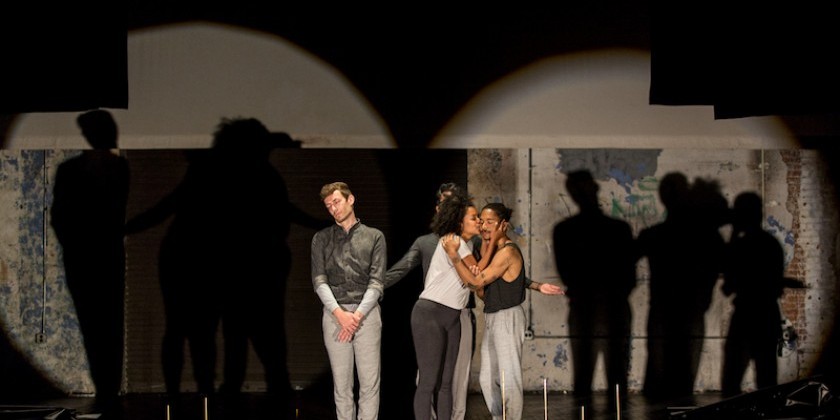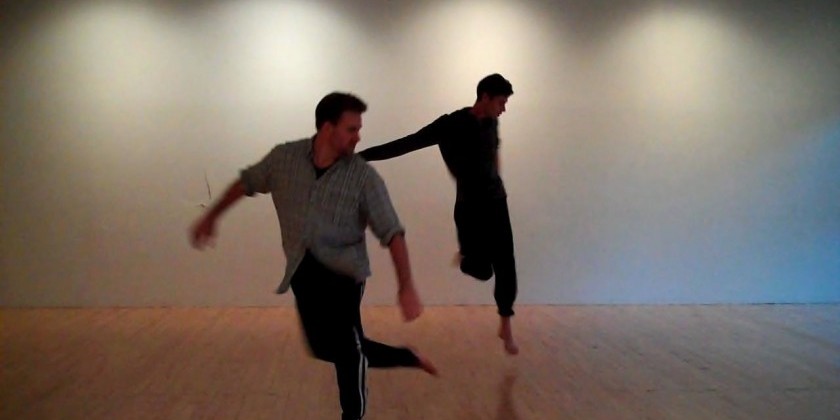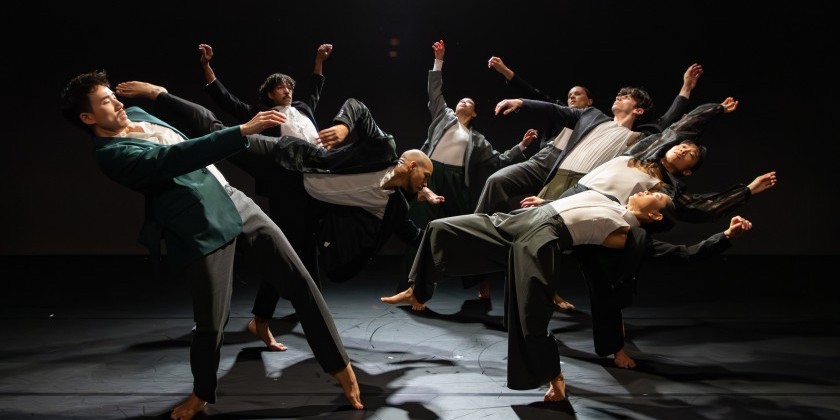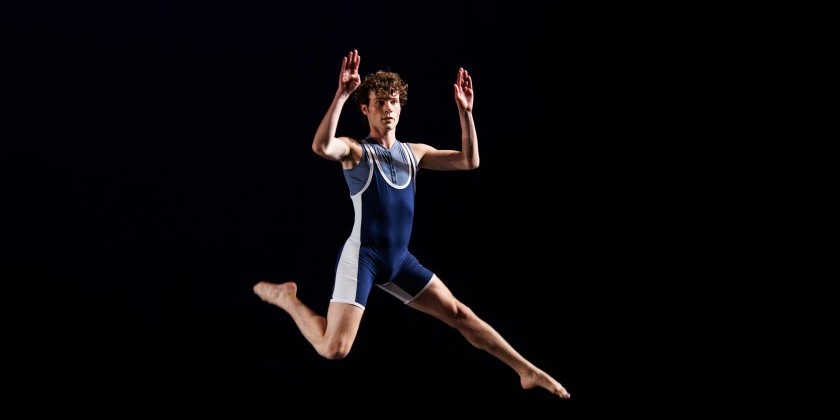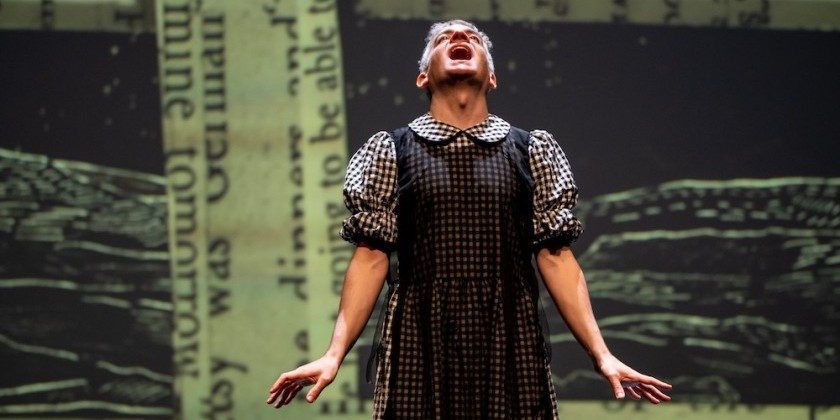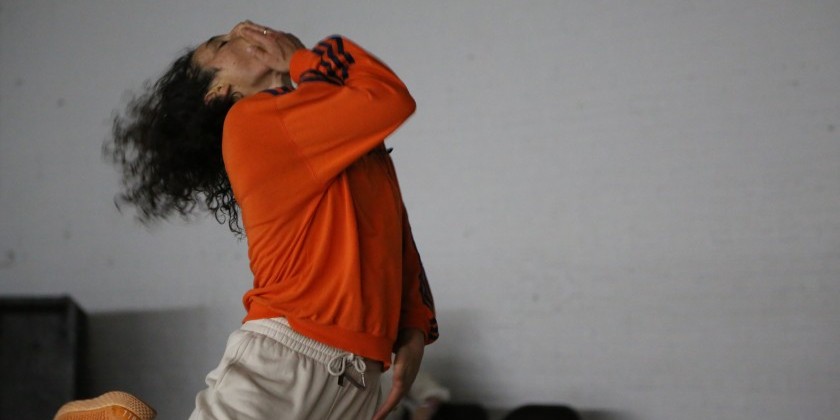IMPRESSIONS: Anna Sperber's “Beacons” at The Chocolate Factory Theater

Choreography by Anna Sperber in collaboration with performers
Performed by Tim Bendernagel, Owen Prum, Zo Williams
Epilogue performed by Anna Sperber
Music: Lea Bertucci | Lighting: Madeline Best | Costumes: Nicole Kurily
Creative Production and Administrative Support: Shana Crawford
May 7, 2025
The thing I love most about this time of year is the lingering daylight — afternoons extend their lazy luminescence minute by minute, golden hour luxuriates in the clouds, dusk surprises me at 8pm. And 7pm shows at The Chocolate Factory Theater floodlit by pale brightness filtered through skylights that yawn among the rafters of its whitewashed interior. After months of entering and leaving shows under cover of night, the space draws my attention to the resonance between the Earth’s seasonal rhythm and my internal circadian shift. As a person temperamentally inclined toward summer’s languid heat and early sunups and late sundowns, this feels like my first taste of the coming season, even as a crisp cool edges the evening air.
Choreographer Anna Sperber also concerns herself with rhythms in the body and the world in “Beacons,” a new work for the sensitive trio of Tim Bendernagel, Owen Prum, and Zo Williams, along with a solo epilogue for Sperber herself. The work’s strength lies in its intimacy as we experience the performers’ gravity and breath through sound and movement, from the persistence of shared footfalls that make the stage’s hollows their drum to a wistful convening of motion-activated harmonicas. This sensory immediacy bolsters the work’s formal and kinesthetic makings: the arcs and vectors of its patterns, the swing and shape of its momentum as a function of time and space.
Owen Prum. Photo: Brian Rogers
One by one the performers bound onto the stage at a measured run that falls into precise rhythm as they swing, spin, and catch the wind through intersecting trajectories of long diagonals and banking curves. The floor amplifies the pounding of their feet as their breath builds, bodies loose and alert to the shared rhythmic imperative that pulsates in the air even after it dissolves. The dance grows from the ground of their bodily communion through encounters and departures that quietly reveal the performers through tender abandon and etched stillness. Lea Bertucci’s score evokes bodily and ecological presence: the rush of wind in brassy echoes and tinkling chimes, the crackle of fire and patter of rain, a burbling stream and its symphony of night fauna, and the thrum of bass underneath, encroaching and receding as sonic landscapes fade in and out of our mind’s eye.
The unadorned expanse of white-floored stage hovers just away from white-bricked walls, yet it is more than a blank canvas for the dance. The performers play with the rough texture and fixtures on the walls, bridging the narrow border of concrete that surrounds the raised stage like an interstitial zone — a space for waiting and watching, resting and preparing. The fade of the waning dusk complements the subtle tones of Madeline Best’s lighting that carefully attunes the glowing or graying white with watercolor washes of pink or blue and diffuse angles that cast soft shadows like gentle ghosts. As the dance progresses, the performers shift from Nicole Kurily’s jewel and earth-toned costumes to billowing metallics that move organically with the dance and resonate with the ambient progressions of sound and light.
The performers are generously transparent in their cycle of inward feeling and outward looking — a directness of presentation amplified by our shared lighting environment. Gazes remain patient and open, thoroughly mutual in recognizing the inherent confrontations and possibilities at play. Vulnerability and support emerge as themes, as when Bendernagel and Prum kneel across a short distance and alternate folding into each other, one’s head coming to rest tenderly in the other’s lap. Exercises in trust abound as the three traverse the space in a cluster, falling with plunging fists and catching with cupped palms; later they interlock arms and lean back to send their small circle into a vertiginous careening of calibrated tension and shared momentum.
They reprise their rhythmic bounding to punctuate their staggered exit and return to explore new relations of rhythmic and sonic consonance in their breath, channeled through harmonicas. Singly and in loosely staggered harmony, they breathe tinny tones into the blue dim of evening, deep and wistful or high and dreamy, swooping or spinning to alter the sound with their whole bodies. Bertucci’s score joins in with reverberating layers of harmonica, plaintive and airy, metallic and organic. Like their earlier footfalls, the harmonicas lend embodied sonic depth to their movement, opening another dimension to sense how their bodies show up and affect the space around them. They exhale tones as they stride and pause, recede and brighten, leaving shadows and soundwaves in their wake.
A brief pause hangs in this activated air before Sperber, clad in dramatically-sculpted black, takes the stage for the work’s epilogue, a tensely watchful solo that flashes and lingers between registers of tone and timing. From the downstage corner, she surveys the landscape, sighting down her arena as her raised hands palpate the air and grasp at rising sounds. Wielding force with finesse, she throws pins and punches, carves and caresses the air, whirling and gasping with restless, focused power. On her own body as much as on others, Sperber’s movement language is slippery and evocative, thick with textural mysteries centered on a pliant and resilient spine. Arms express placid high V’s, tremble like young branches, and close like flowers blooming in reverse; a fist placed just so becomes architecture, a thumb traces the center line, width and breadth curl and splay in rest or surrender.
These bodies are garrulous and unfixed yet remain tethered to one another: in rhythm, in breath, in the light and sound and cellular makings of interconnected ecologies where the presence of each entails the presence of others. As I stepped out into the just-fallen darkness, I sensed the scope of myself expand: footfalls and breath in communion with the world.







